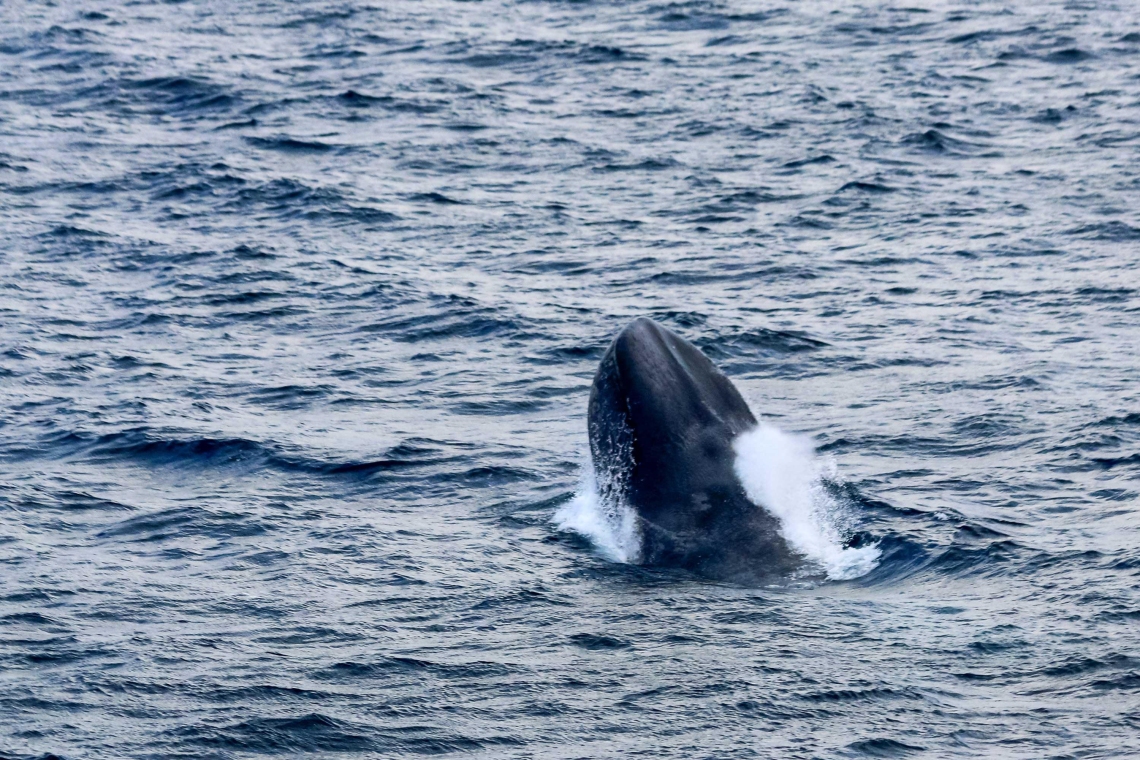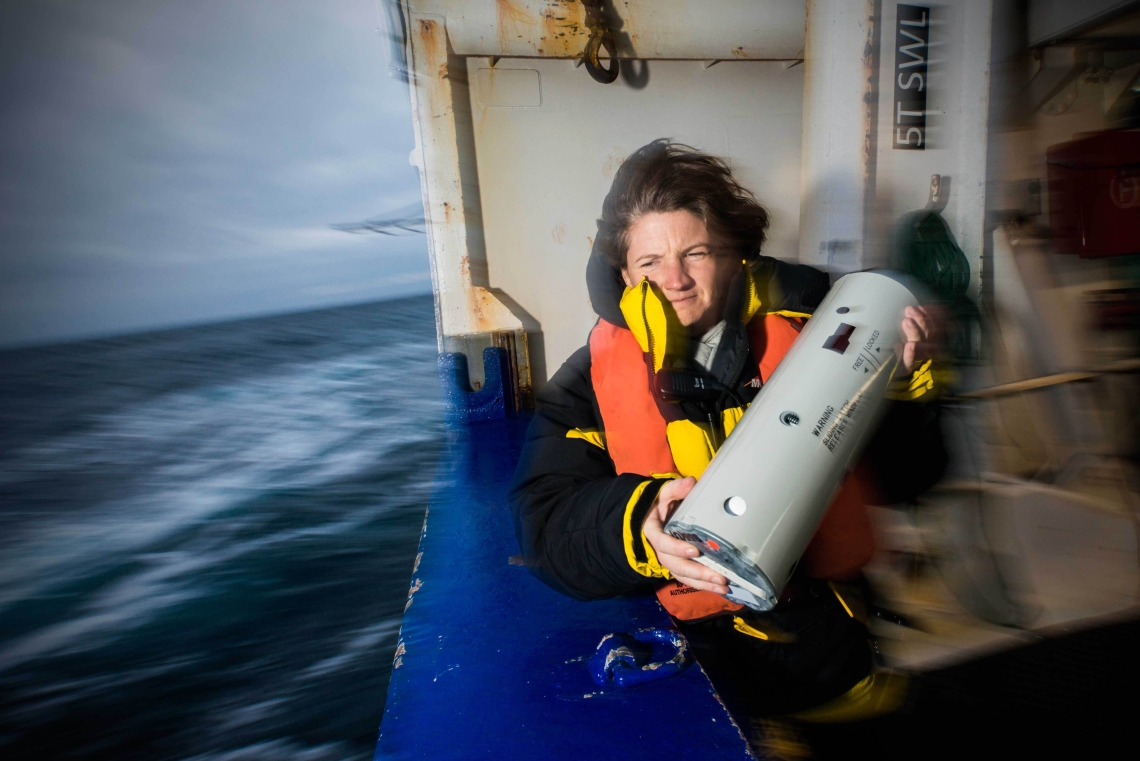Scientists from the Australian Antarctic Division (AAD) explain the blue whale research they are leading onboard Tangaroa as part of the New Zealand-Australian Antarctic Ecosystems Voyage 2015.
The whale research team onboard the RV Tangaroa, led by the Australian Antarctic Division (AAD), has come looking for Antarctic blue whales. Not the most taxing task, it might seem, given that they are the largest mammal ever to have lived on the planet. They should be hard to miss. However, years of industrial whaling in the mid-20th Century reduced Antarctic blue whale numbers to just a few hundred animals (out of an estimated population of over 200,000). With thousands of miles of Antarctic Ocean in which to search for them, the rules of needles and haystacks come to apply.
However, their very rarity is why it’s so important we find them – to try to work out how many of them there are, whether their numbers are increasing, and to discover more about their movement patterns.
Listening for whales
Traditional methods of surveying for whales, which usually involve searching visually for animals from a ship, can be costly and inefficient when looking for such a small number of animals over such a large area. So the AAD has pioneered a new way of finding and tracking blue whales – by listening for their sounds.
Whales and dolphins use underwater sounds to help them navigate, communicate and find food. Antarctic blue whales make very loud, very low frequency vocalisations which sound like moans and groans to us – including some sounds that are too low frequency for us to hear at all. The nature of these sounds means that they can be detected for hundreds of miles – very useful for large whales which travel and feed over huge distances. However, it’s also very handy for scientists. If we can listen in on these sounds, and what direction they are coming from, they can lead us to the whales themselves.
Military technology adapted for whale research
But how do you listen for whales? AAD scientists have developed a way of using military technology designed to locate to submarines to instead listen for whales. These devices, called DIFAR sonobuoys, contain underwater sensors which detect sounds but also have a magnetic compass for determining the sounds’ direction. The military deploy them from planes and helicopters to listen for submarines. AAD scientists now launch them from a research ship to listen for whales. The sonobuoys then transmit their information back to the ship by radio, where it is decoded and analysed by the scientists onboard using specialist hardware and software. They listen to the sounds, identify the distinctive calls of Antarctic blue whales and plot the direction they are coming from.
AAD first tried out this methodology in the Antarctic two years ago. It was a pilot study, and we didn’t know if it would work over the great distances required; if it would lead us to the whales. However, we were delighted by how effective it was. We were able to track Antarctic blue whales hundreds of miles away and gradually, by deploying sonobuoys and plotting their bearings, get close enough to the animals to see their large powerful blows on the horizon, which finally led us to them.
When the whales are found
What do we do when we find the blue whales? On this voyage we are using photo-identification to identify animals by their natural markings (their mottling patterns are unique to each animal – like a fingerprint – and are a way of identifying each as an individual), and taking genetic samples. Both these techniques are used to find out about the population size, movements and distribution of Antarctic blue whales. AAD scientists are also looking at the behaviour and movements of the whales at a fine scale using video range tracking equipment. We are also working with NIWA scientists to gather more information about their feeding habits. We know that blue whales eat krill, but we don’t know very much about how they find it, or how they target areas for feeding.
And of course there are the whale sounds themselves. Not only are they useful for finding the whales in the first place, they are also interesting in their own right. We are able to study the different types of sounds, how loud they are, and what behaviours are associated with which sounds. We are only just scratching the surface of the blue whales’ vocal repertoire, and continue to be surprised by some of the sounds they make, especially when they are in large, social groups.
Importance of this blue whale research
We are currently in the middle of this multi-disciplinary research onboard and are very pleased with progress so far – we have tracked, photographed, observed many whales, with accompanying krill surveys. This research will contribute valuable data and results to the Southern Ocean Research Partnership (SORP), an international consortium of countries conducting non-lethal whale research in the Antarctic.
In addition to the importance of the Antarctic blue whale scientific research onboard, it’s also a great privilege and joy to be able to observe these whales in an environment as exceptional as the Antarctic. Massive, very beautiful, and surprisingly swift and agile for their size, their colouring when seen from the surface is not so much blue as a mottled grey. And when seen through the water, they are the most beautiful turquoise blue, which is probably how they got their name.
The success of this new acoustic method for finding blue whales has been much greater than we could have hoped for, and is very encouraging for future research expeditions. It should now be much easier to work out how many whales there are, and whether Antarctic blue whales are really recovering from the devastating effects of industrial whaling.


